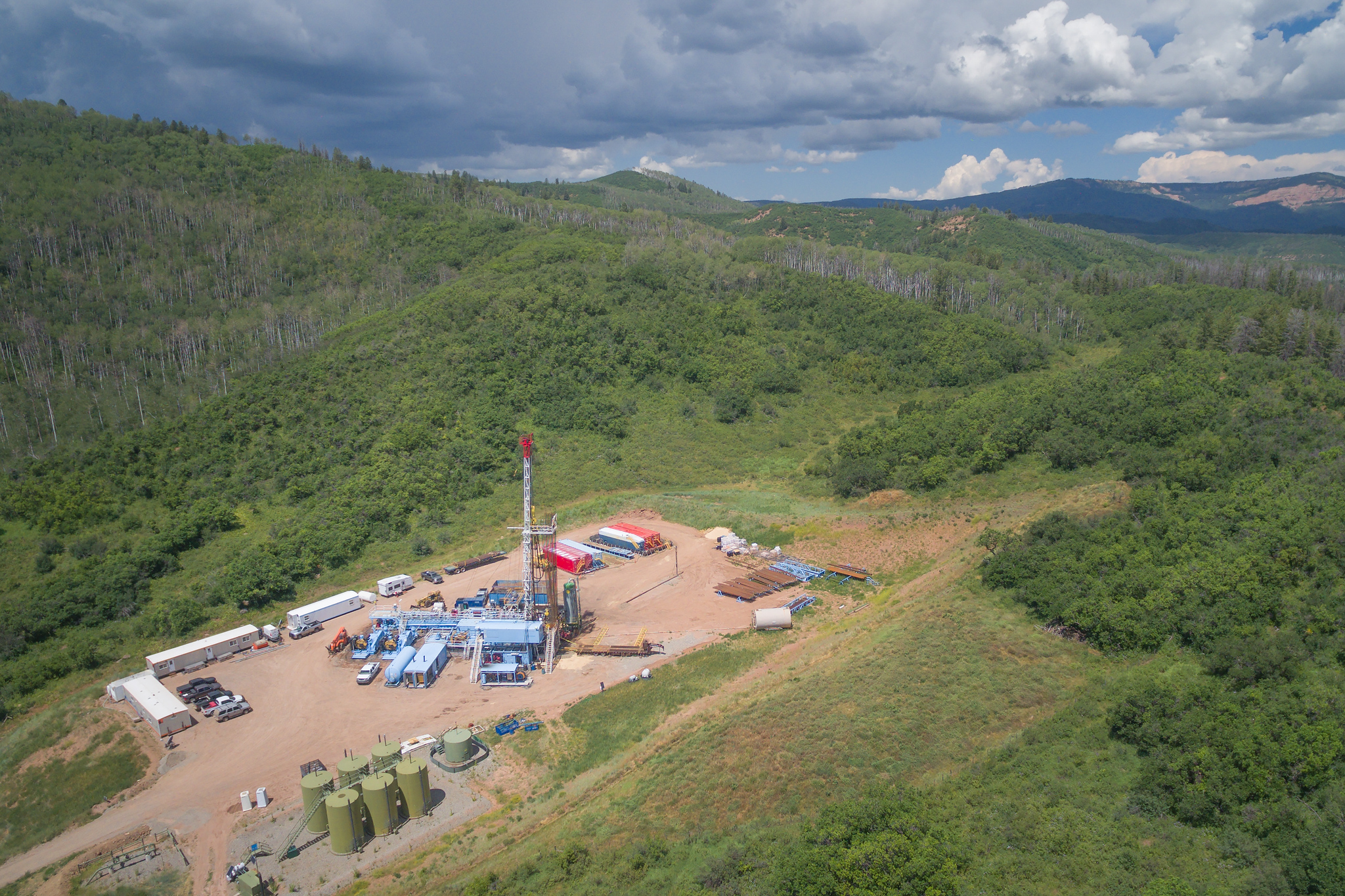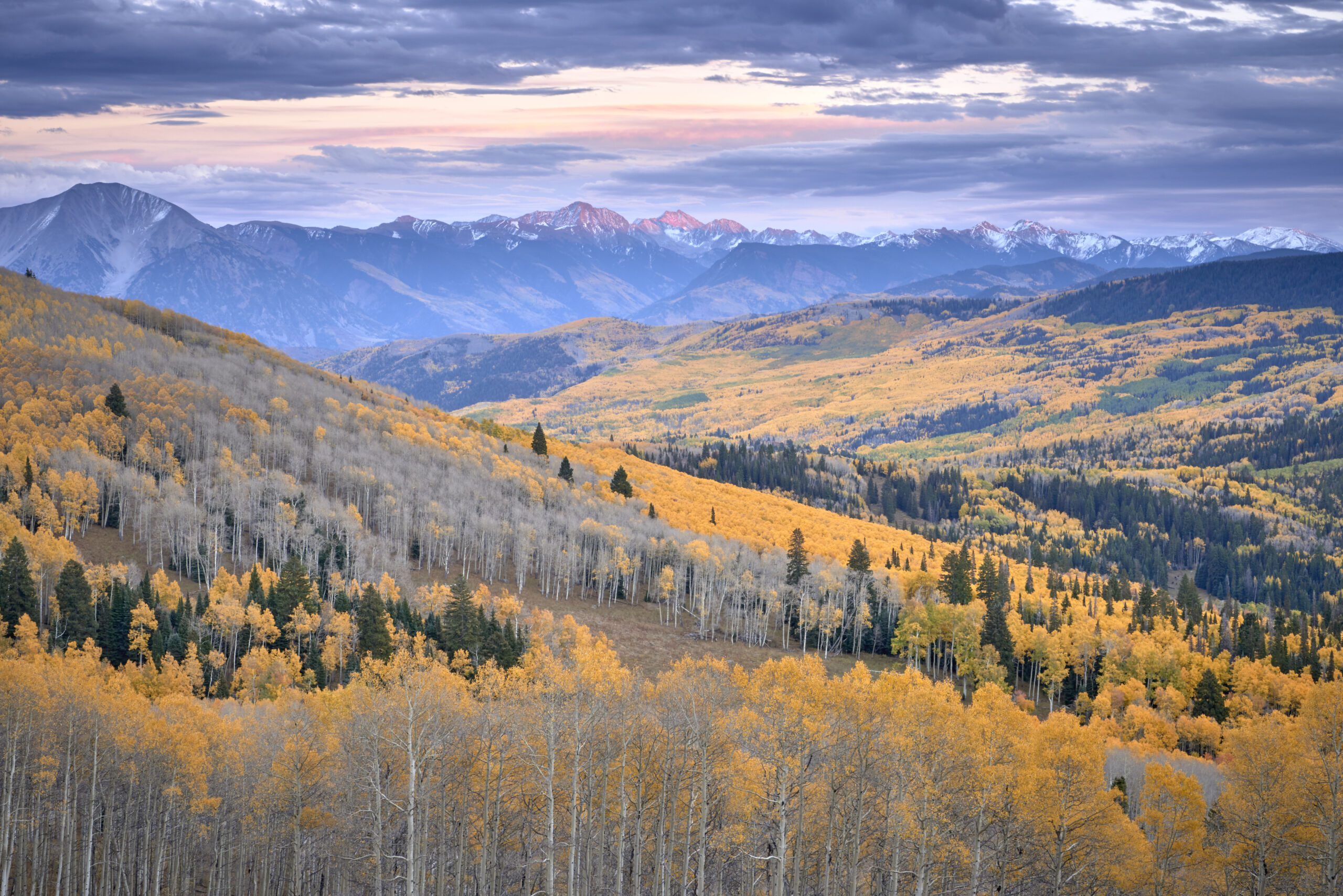Oil and gas development on public lands has a devastating impact.
Oil and gas development on public lands causes significant and long-lasting harm to wildlife habitat, the climate, and clean air and water. As a result, Wilderness Workshop has consistently made it a top priority to fight oil and gas leasing and development across Western Colorado. We’ve successfully stopped new developments in the Thompson Divide, the North Forth of the Gunnison, the Colorado River Valley, and on the Roan Plateau.
Oil and gas extraction requires wells and well pads, gas lines, roads, hydraulic fracturing, and other infrastructure that destroy habitat for wildlife, pollute air and water, degrade recreation experiences, impact the health and quality of life for nearby communities, and damage other ecological resources. Today, in the midst of a climate emergency, it’s imperative that no new oil and gas leasing and its associated carbon emissions occur – and that we wind down all existing fossil fuel development on public lands.

Drill pad in the Gunnison National Forest. Photo courtesy Mason Cummings/The Wilderness Society.
“About one quarter of U.S. (climate) emissions can be traced back to oil, gas, and coal development on public lands and water…to put that in context: public lands would rank as the 5th largest sources of emissions in the world as their own nation.” – The Wilderness Society Report.
Current Projects
Land use planning – As part of its management of oil and gas leasing and development on public land, the Bureau of Land Management (BLM) develops Resource Management Plans (RMPs), which dictate how millions of acres of public lands are used. WW engages in these RMP to protect public lands.
- Upper Colorado River Supplemental Environmental Impact Statement (SEIS). As a result of lawsuits filed by WW and our partners over two RMPs, the BLM will revisit oil and gas management decisions for nearly 2 million acres of federal lands in western Colorado and will specifically analyze the climate impacts of leasing and development and take a fresh look at which areas should be off limits to this damaging use of public lands.
- Uncompahgre Field Office RMP. A Trump-era RMP in the BLM’s Uncompahgre Field Office opened 95% of public lands to oil and gas leasing, including the entire North Fork Valley, completely failing to protect wilderness-quality lands, wildlife habitat, and water resources. In 2020, we sued and in the fall of 2022, the BLM agreed to settle. Thanks to our settlement, public lands will have another chance to get the protections they deserve. As the BLM drafts another plan, our settlement guarantees the agency will consider additional protections for wildlife habitat, lands with wilderness characteristics, and Areas of Critical Environmental Concern.
Policy Reforms – We’ve known for a long time that the federal oil and gas leasing program is antiquated, broken, and requires holistic reform. In partnership with our national conservation partners, WW is striving to enact those reforms. Early on, the Biden-Harris administration identified “significant deficiencies in the federal oil and gas programs” including that it “inadequately accounts for environmental harms to lands, waters, and other resources” among other major failures. We need critical reforms to how existing leases are managed, to prevent the oil and gas industry from abusing loophole after loophole to keep leases on the books and the public in the dark.
Leasing and Development Proposals – We monitor, and usually oppose, every proposed oil and gas development in our geography whether it’s one well, or a much larger Master Development Plan, like the North Fork Mancos Master Development Plan, which we successfully stopped in 2022.
Seek Permanent Protections – In some cases, we seek permanent protection utilizing a mineral withdrawal to ensure no future oil and gas leasing can occur. This is what we’re advocating for in the Thompson Divide with the Colorado Outdoor Recreation and Economy (CORE) Act.

The Thompson Divide, which WW has long worked to protect from oil and gas. Photo courtesy Jon Mullen/Ecostock.
“For years, rampant road building for timber, mining, recreation and other development has splintered our national forests into fragments—many of which are too tiny to support rich wildlife and ecosystems. In contrast, roadless areas are intact havens within these forests, 5,000 acres or more in size, that haven’t been cut up with roads.
These are areas big enough to get lost in – places with clean air and water, undisturbed soils, diverse plant and animal communities, and critical habitat for threatened and endangered species.” – A love letter to Roadless Areas.

